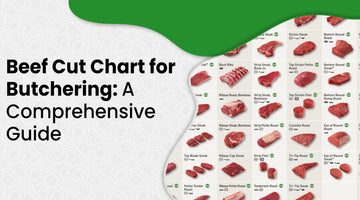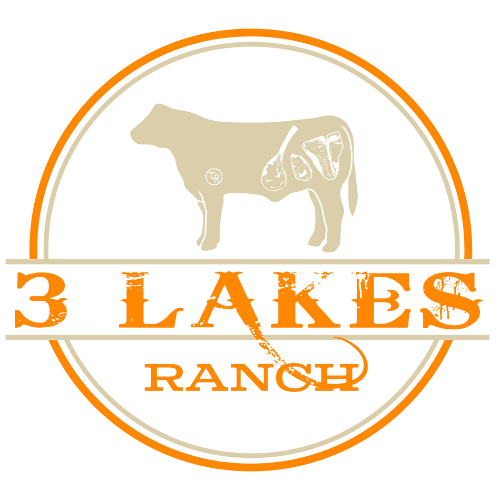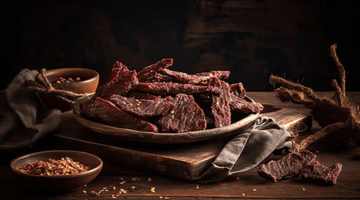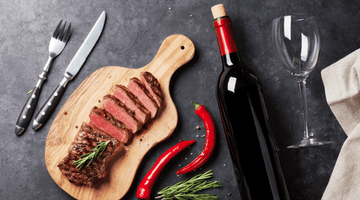
Whether you're a seasoned chef or a home cook looking to enhance your culinary skills, understanding the art of beef butchery is a valuable skill. From selecting the right cut for your dish to mastering the various cooking techniques, a solid foundation in beef cuts is essential.
In this blog, we shall look into the intricacies of beef butchery, with a focus on the beef cut chart – a visual guide that lays out the different sections of the animal.
Understanding the Beef Cut Chart
A beef cut chart is a roadmap to the various sections of a cow, providing a detailed breakdown of where specific cuts of meat come from. By familiarizing yourself with this chart, you gain insights into the characteristics of each cut, helping you make informed decisions about the best cooking methods and recipes for each piece. Let's explore the major divisions on a standard beef cut chart.
Also Read: Cook Perfect Sirloin Steak at Home
Beef Primal Cuts
Chuck
The chuck, located in the shoulder area, is known for its rich flavor and marbling. This section yields popular cuts like the chuck roast, perfect for slow cooking, and the chuck steak, suitable for grilling or pan-searing.
Rib
The rib section houses some of the most sought-after cuts, including the prime rib and ribeye steak. Recognized for their tenderness and exceptional flavor, these cuts are often associated with special occasions and fine dining.
Loin
Situated in the middle of the animal, the loin produces premium cuts like the tenderloin, sirloin, and T-bone steak. These cuts are prized for their tenderness, making them ideal for quick-cooking methods like grilling and pan-searing.
Round
The round, found in the hindquarters, is leaner and less tender compared to other primal cuts. Popular cuts from this section include eye of round, round steak, and round roast, which benefit from slow-cooking methods to enhance tenderness.
Flank
The flank, located below the loin, offers flat and flavorful cuts such as flank steak. While less tender, flank steak is revered for its bold taste and is best cooked quickly at high heat.
Brisket
Situated beneath the chuck, the brisket is a well-exercised muscle, making it tough but incredibly flavorful. Often braised or smoked, brisket is a staple in barbecue and yields mouthwatering results when cooked low and slow.
Short Plate
This section includes cuts like short ribs and skirt steak. Short ribs are known for their succulence when slow-cooked, while skirt steak, with its robust flavor, is excellent for grilling or searing.
Shank
The shank, found in the lower leg, contains meat surrounded by connective tissue. This section is commonly used for stews and soups, benefitting from long, slow cooking to break down the tough fibers.
How to Cook Different Cuts of Meat?
Each cut of beef requires a specific approach to cooking to bring out its best qualities. Here's a quick guide to cooking some popular cuts:
- Grilling: Ribeye, T-bone, sirloin, and skirt steak are ideal for grilling, offering a perfect balance of tenderness and flavor.
- Slow Cooking: Chuck roast, brisket, and short ribs shine when slow-cooked, allowing the connective tissues to break down and infuse the meat with richness.
- Pan-Searing: Tenderloin, strip steak, and flank steak are well-suited for quick cooking methods like pan-searing, delivering a delicious and tender result.
- Braising: Shank and round cuts benefit from braising, a slow-cooking method that tenderizes tougher meat while creating a flavorful broth.
Also Read: How to Cook Perfect Pot Roast?
Why Shop for Beef At 3 Lakes Ranch?
When opting to shop for beef, Three Lakes Ranch stands out as a premier choice for consumers. Our commitment to quality is underscored by the proud labels of '100% fresh' and '100% natural' on our products, assuring customers of exceptional standards. Upholding stringent hygiene measures throughout our production process, we prioritize efficiency to guarantee cleanliness from butchering to packaging.
With over three decades of ranching expertise, Three Lakes Ranch takes immense pride in delivering farm-to-table freshness, controlling every aspect from raising cattle to processing meat.
Our products proudly bear the USDA certification, a prestigious endorsement reflecting our unwavering dedication to superior standards and uncompromising excellence. Choosing Three Lakes Ranch means choosing not just beef, but a culinary experience rooted in quality and expertise, where every bite attests to our commitment to delivering the finest.
FAQs
-
What is a beef cut chart, and why is it important for butchering?
A beef cut chart is a visual representation of the various sections of a cow, illustrating where specific cuts come from. It is crucial for butchering as it serves as a guide for breaking down the animal into manageable portions, ensuring that each cut is utilized effectively.
-
How do I read a beef cut chart?
Reading a beef cut chart involves understanding the different primal cuts and their corresponding individual cuts. Familiarize yourself with the regions and characteristics of each cut to make informed decisions about cooking methods and recipes.
-
What are the most popular beef cuts for grilling?
The most popular beef cuts for grilling include ribeye, T-bone, sirloin, and skirt steak. These cuts are well-marbled, tender, and offer a rich flavor profile when cooked over an open flame.
In conclusion, mastering the art of beef butchery involves more than just knowing how to wield a knife. It requires a deep understanding of the beef cut chart, recognizing the unique qualities of each cut, and selecting the right cooking method to enhance its flavors. Whether you're aiming for a perfectly grilled steak or a succulent slow-cooked roast, a solid foundation in beef cuts is your key to culinary excellence.




